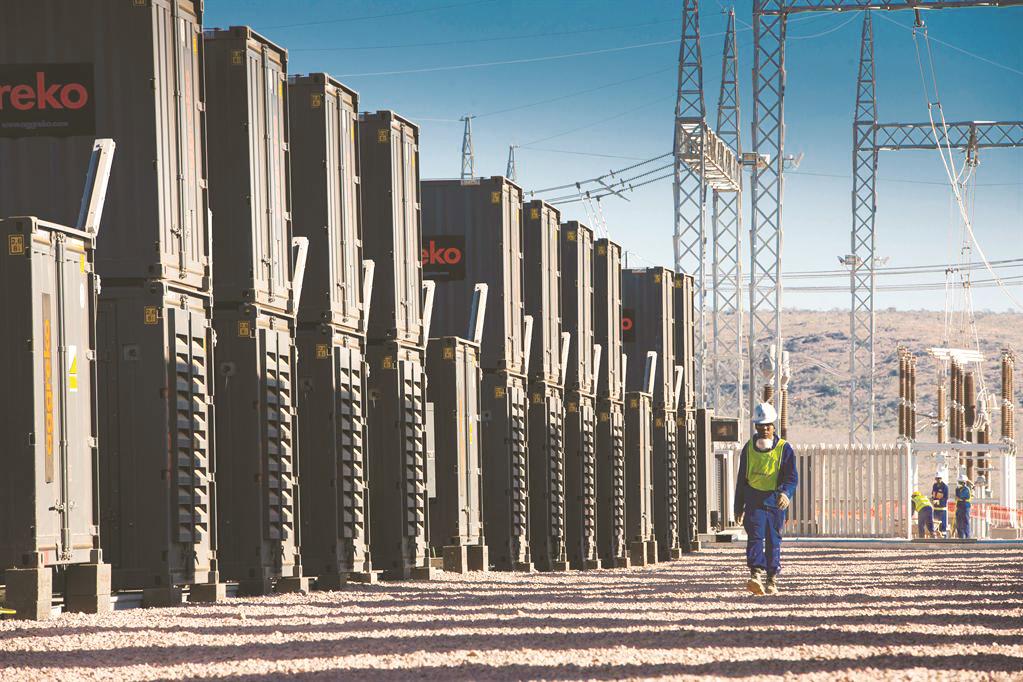Namibia: Namibia Energy Profile
2015/01/25
Geology
Geologically, Namibia forms part of an extremely old region, with Pre-Cambrian granitic and metamorphic rocks dating back over billion years. These shield or 'basement' rocks are usually covered by additional recent sedimentary rocks, mostly deposited during the Mesozoic era (65 to 235 million years ago). Tectonic activity or movement in the earth's crust over the last 100 million years or so created a number of rifts through which magma was able to reach the surface (see Kimberlite (diamond) pipes) and resulted in the uplifting of most of the area above sea level.
Kimberlite (diamond) pipes
Diamond is a crystalline form of ordinary carbon created under conditions of extreme pressure and temperature. In nature, such conditions are only found deep below the earth's surface in the lower crust or upper mantle. Under certain circumstances in the past (usually associated with tectonic activity) the rock matrix in which diamonds occurred was subjected to such great pressure that it became fluid and welled up to the earth's surface in a volcanic pipe of fluidised material. The situation is similar to a conventional volcanic eruption, except that instead of basaltic magma being erupted through fissures in the crust, the volcanic material is a peculiar rock called kimberlite. This contains a wide assortment of minerals (including diamond) in addition to large chunks of other rocks that have been caught up in the process.
The pipes are correctly termed kimberlite pipes, and occur throughout southern Africa from the Cape to Zaire. However, only a small proportion of those discovered have proved to contain diamonds in sufficient abundance to be profitably worked. Namibia's diamonds derive not from primary kimberlite pipes, but from secondary diamond deposits – areas where diamonds have been washed down and deposited by old rivers, which have eroded kimberlite pipes in the interior on their way.

Namibia Energy production: For that indicator, The World Bank provides data for Namibia from 1991 to 2011. The average value for Namibia during that period was 277.55 kilograms of oil equivalent with a minumum of 189.97 kilograms of oil equivalent in 1994 and a maximum of 334.11 kilograms of oil equivalent in 2011.
We show the energy production of Namibia . It includes oil, natural gas, solid fuels, renewables and electricity, all converted into oil equivalents. The numbers are in kt (a measure of energy) oil equivalent.

World Bank definition: Energy production refers to forms of primary energy--petroleum (crude oil, natural gas liquids, and oil from nonconventional sources), natural gas, solid fuels (coal, lignite, and other derived fuels), and combustible renewables and waste--and primary electricity, all converted into oil equivalents.
- Namibia News
-
- AFGHANISTAN: UNWTO: International tourism – strongest half-year results since 2010
- BOTSWANA: Why governments need to support the financial sector to meet the unserved needs of smallholder farmers
- BOTSWANA: International Arrivals To Africa Reach More Than 18 Million In 2017
- BOTSWANA: Africa: USA-Africa - No Policy? Bad Policy? or Both?
- BOTSWANA: Africa: U.S. State Department To Get Experienced Diplomat in Key Africa Post
- BOTSWANA: Africa’s economic growth in 2016 was driven by East Africa
- Trending Articles
-
- SOUTH AFRICA: Nigeria and South Africa emerge from recession
- EUROPE: Ball Corporation Debuts Three New Aluminium Beverage Can Sizes
- BAHRAIN: Aluminium Bahrain’s Line 6 Expansion Achieves 25 Percent Completion
- CHINA: Chinese-supported infrastructure projects change Zambia's landscape
- NIGERIA: The Security and Exchange Commission approves the 40th Annual General Meeting of Oando PLC
- UZBEKISTAN: Former deputy PM named Uzbekistan Airways head






.gif?1356023993)

